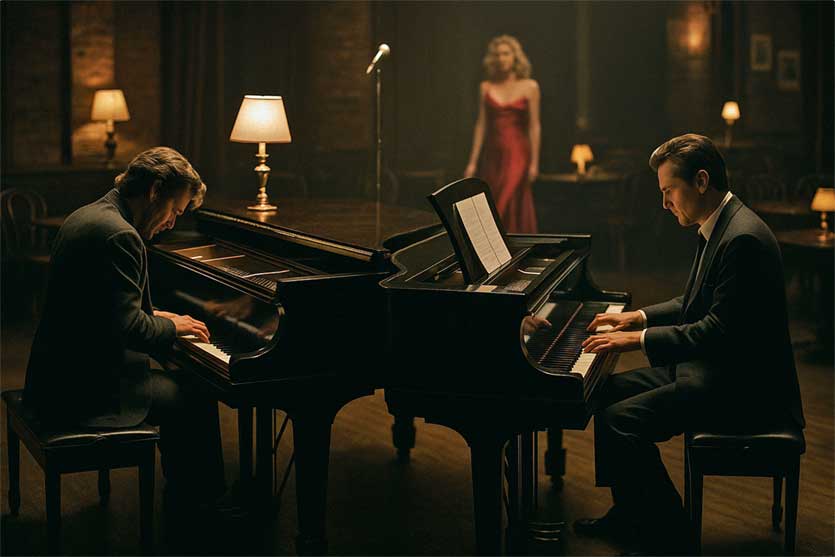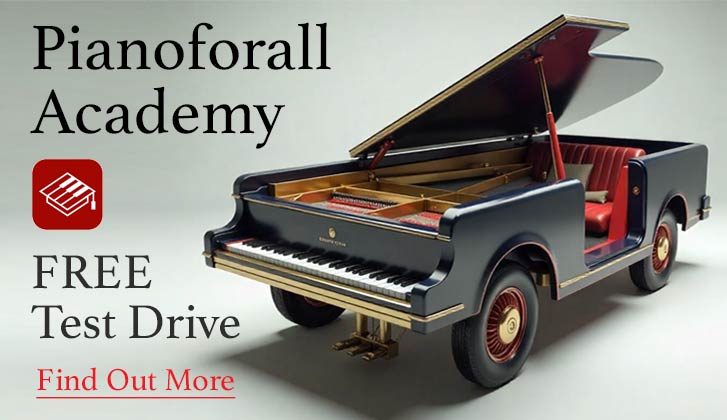Some films just have a piano. Others make the piano the beating heart of the story. The Fabulous Baker Boys is one of those rare ones where the piano isn’t just there for atmosphere — it’s the stage, the tension, and sometimes the only honest thing in the room.
Released in 1989, it’s a late‑night kind of film with real‑life brothers Jeff and Beau Bridges playing Jack and Frank Baker — two pianists slogging through lounge gigs in tired old clubs. Their act is worn thin. So they hire a singer. In walks Michelle Pfeiffer as Susie Diamond — red dress, satin gloves, a voice that makes you sit up and pay attention. If you remember one scene, it’s probably her singing Makin’ Whoopee draped across the piano.
Real Brothers, Real Playing
Jeff and Beau Bridges didn’t fake it. Jeff was already a capable amateur pianist and played a lot of his own parts; Beau put in the hours to keep up. Their duets are musical conversations — sometimes smooth, sometimes prickly. One brother keeps it neat and commercial; the other chafes, looking for something more. If you’ve ever played with a sibling or close friend, you’ll recognise that mix of harmony and friction.
Susie Diamond: More Than a Red Dress
Susie isn’t just there to be glamorous. She’s the shock the act needed. A bit rough round the edges, with a voice that’s smooth but carries a sting, she changes the whole mood. Pfeiffer’s Makin’ Whoopee gets remembered for the visuals, but listen for the phrasing, breath control, and the way she sings to the piano as much as over it.
The Sound of Late‑Night Regret
Dave Grusin’s soundtrack — part standards, part originals — sounds like rain on a city street at midnight. It’s unspoken feelings and second chances that may not come. If you’re a pianist, you’ll want to sit down and play along, maybe in a half‑lit room with a glass on the lid. Much of the music is available in sheet form; Makin’ Whoopee is a great study for rubato and timing.
Little Nuggets You Might Not Know
- Madonna and Debra Winger were considered for Susie before Pfeiffer got the role.
- Jeff Bridges drew on real jazz road stories for Jack’s world‑weariness.
- The red dress was custom made — and the piano was tweaked so Pfeiffer could glide across it.
- Several club scenes were shot in real venues, which helps the piano sound feel lived‑in (and yes, that upright in the hotel scene could have used a tuning).
Why It Hits Harder as You Get Older
If you’re learning or returning to piano later in life, this film lands differently. It’s about finding the spark after routine. It’s about music as something alive, not just something to play “correctly.” Whether you’re tackling Makin’ Whoopee, Moonglow or My Funny Valentine, don’t just play the notes — let the piano be part of the story you’re telling.
The Takeaway
In The Fabulous Baker Boys, the piano isn’t furniture — it’s witness and battleground. That’s a good reminder for practice: make the instrument your partner. Bring your own voice to the music, and let the room hear it.



